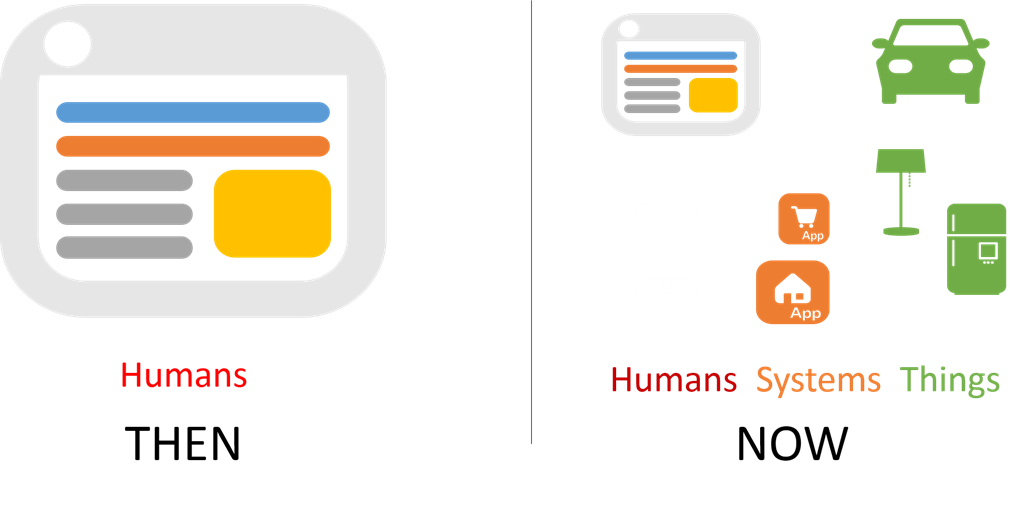ビッグデータが欲しいですか? ビッグデータを処理できない…
現在のインフラストラクチャでは、世界がデジタル経済に移行するにつれて予測されるデータ、接続、トラフィックの爆発的な増加に対応できません。

私たちはデジタル経済について話しますが、それが実際に何を意味するのかという詳細に踏み込むことはあまりありません。 つまり、紙の記録や電話が監査証跡と電子メールに置き換えられるということです。 これは、請求書と顧客ファイルが電子領収書とデータベース レコードによって段階的に廃止されることを意味します。
デジタルデータへの移行は、いつの日か、石板からパピルスへの移行と同じ歴史的影響をもって見られるようになるでしょう。 私たち人間がデータを記録する方法が進化するたびに、記録はより安価に、より速く、より効率的になりました。 つまり、私たちは人類史上かつてない速度でデータを作成しているだけでなく、蓄積しているのです。
終わりは見えません。 デジタル経済の最初の兆候が現れたのは、膨大な量のデータを非常に効率的な 1 と 0 で捕捉できるようになったときでした。 しかし、それはまだほとんど手作業でした。 データ入力とログ ファイルにより、インターネットの初期に収集されたデータの大部分が提供されました。
これで、データを自動的に収集する方法がわかりました。 極小のトランジスタとロボットの支援により、建物全体の計算能力をピンの頭ほどの大きさにまで圧縮しました。 そして私たちはそれをあらゆるものに取り入れています。 電球。 時計。 モーションセンサー。 カメラ。 水フィルター。 車。 冷蔵庫。 時計。 電話。 テディベア。 おもちゃ。
インターネットに対応しておらず、成長を続けるモノのインターネットの一部ではないものがあるとしたら、それが何なのか私にはわかりません。 はい、その大人のおもちゃについても聞いたことがあります。 シェアする必要はありません。結局のところ、これは G 指定のブログです。

しかし、存在は使用されることを意味するわけではなく、私たちは物事の爆発的な成長の端に触れているだけです。 つまり、今後数年間でインターネット上のデバイスがさらに増えることになります。 非常に多くのデバイスが、これまでインターネットが経験したよりもはるかに大量のデータを送受信しています。 業界の予測では、2020 年までに世界中で 500 億台の接続デバイス、つまり地球上の人口 1 人あたり 7 台のデバイスが存在すると推定されています。
私が今座っている場所から数えられるのは 3 つです。 そして、それは家の残りの部分を数えていません。 自分のデスクの周りを見てもまだ納得できない場合のために、便利な統計をいくつか示します。

Chetan Sharma Consultingが今年第2四半期にまとめた統計によると、自動車だけが他の何よりも速く携帯電話ネットワークに接続されるようになっている。 米国の全通信事業者を数えると、この四半期に携帯電話ネットワークに接続された自動車は約140万台だった。一方、携帯電話は120万台、タブレットは90万台未満だった。

パレットトラックによる配送センターの有人移動を排除することで、 Giant Eagle は生産性を 10 ~ 30 パーセント向上させました。 各車両にはデータを収集するためのセンサーが搭載されています。 そして、積み込んだ荷物のサイズ、荷物の配達にかかる時間、施設内の車両の場所、車両のダウンタイムなどのすべてのデータが、Seegrid Supervisorapplicationにアップロードされます。

チックフィレイは食品の安全性を確保するために冷凍庫と冷蔵庫に温度センサーを導入しました。 これまでの監視方法は手作業で行われ、各温度計を目視で確認する必要がありましたが、レストランが閉まっていて誰も見ていないときには、このプロセスはかなりのリスクを伴いました。 現在、センサーは 24 時間体制で監視し、1 時間ごとにレポートを送信しているため、クーラーの故障に気付かなかった場合、推定 15,000 ~ 20,000 ドルの在庫交換コストを節約できる可能性があります。
他にも多くの例がありますが、現時点では、ビッグデータが世界中で毎日毎秒生成され、送信され、保存されていることは明らかです。 そして、その多くは消費者向けではありません。 これは業界では「産業用」と呼ばれ、何よりも業務とプロセスの監視に重点を置いています。 今日ではあらゆる場所に何百万ものセンサーがあり、それぞれがデータを生成しています。
大量のデータ。
物事が報告され、新しい指示が確認され、収集されたデータが交換されると、バックグラウンドで更新が行われます。 それぞれの物には、毎日チャットするアプリがあります。 そのアプリはどこか、データセンターかクラウド内にあります。 それがどこに存在しようとも、重要なのは、それが存在しているということだ。 なぜなら、モノとアプリの間にはインフラストラクチャとサービスがあり、爆発的な成長に対応できる準備ができていないからです。
私の言うことを鵜呑みにしないでください。 フォーブスの記事では、ベイン・アンド・カンパニーが世界企業 325 社を対象に実施した調査を引用し、 「59% の企業が自社のデータから有意義なビジネス洞察を生み出す能力が不足していると考えている」と結論付けています。 ベインが250社を対象に実施した別の調査では、85%の企業が、データの統合とクリーニング、アクセスと権限の管理の簡素化、外部データソースへのアクセスの改善など、既存のデータプラットフォームの更新に多額の投資が必要になると回答しました。 [強調は筆者による]

このデータの爆発的な増加(今日流行語ビンゴをプレイしている皆さんにとって、それは「ビッグデータ」です)の中心にあります。 (どういたしまして)もちろん、データ プラットフォームです。 それがデータベースであり、MongoDB や Heroku などの NoSQL (非リレーショナル) データベースに対する賛否両論の論評や専門家の分析が数多くあるほか、Oracle、MySQL、Microsoft などの SQL (リレーショナル) データベースに対する賛否両論の論評や専門家の分析も数多くあります。
しかし、ビッグデータやダッシュボード、運用上の洞察の収集に関する議論でしばしば無視されるのは、それらのデータ ソースの規模とアクセスを支えるインフラストラクチャが大量にあるということです。 データから価値を引き出すために、キーボードの前にかがみ込んで独自のクエリを書いている事業部門のオーナーや経営幹部はほとんどいません。 これもアプリで実行されます。
デジタル経済に関して自明の理が一つあるとすれば、それはおそらく、データへのアクセスを制御するアプリがどこかに存在するということだ。
そしてそのアプリにはインフラストラクチャが必要です。 セキュリティとスケールが必要であり、物事が時間を知ることができない世界では、24 時間体制の可用性が必要です。
今日のインフラストラクチャは Web 用に構築されました。 それは実際には人々とアプリのために構築されました。 どちらも依然として重要ですが、今では、モノの規模、セキュリティ、可用性の要件に同時に対処するという負担が加わっています。 私たちは、それが私たちのネットワークやインフラストラクチャ、そしてユーザーとアプリの間にあるアプリやデバイスを拡張し、保護する運用プロセスにとって何を意味するのかを再評価する必要があります。 ここで言うユーザーとは、物やシステムも意味します。
認証と承認の管理方法を再考する必要があります。 リクエストと応答をどのように優先順位付けして処理するか。 そして、最も重要なビジネス資産 (データ) が不適切な人物 (または物) に公開されないように保護する方法についても説明します。
「ビッグデータ」とそれに伴うすべてのものを扱うつもりなら、真剣に取り組む必要があります。
